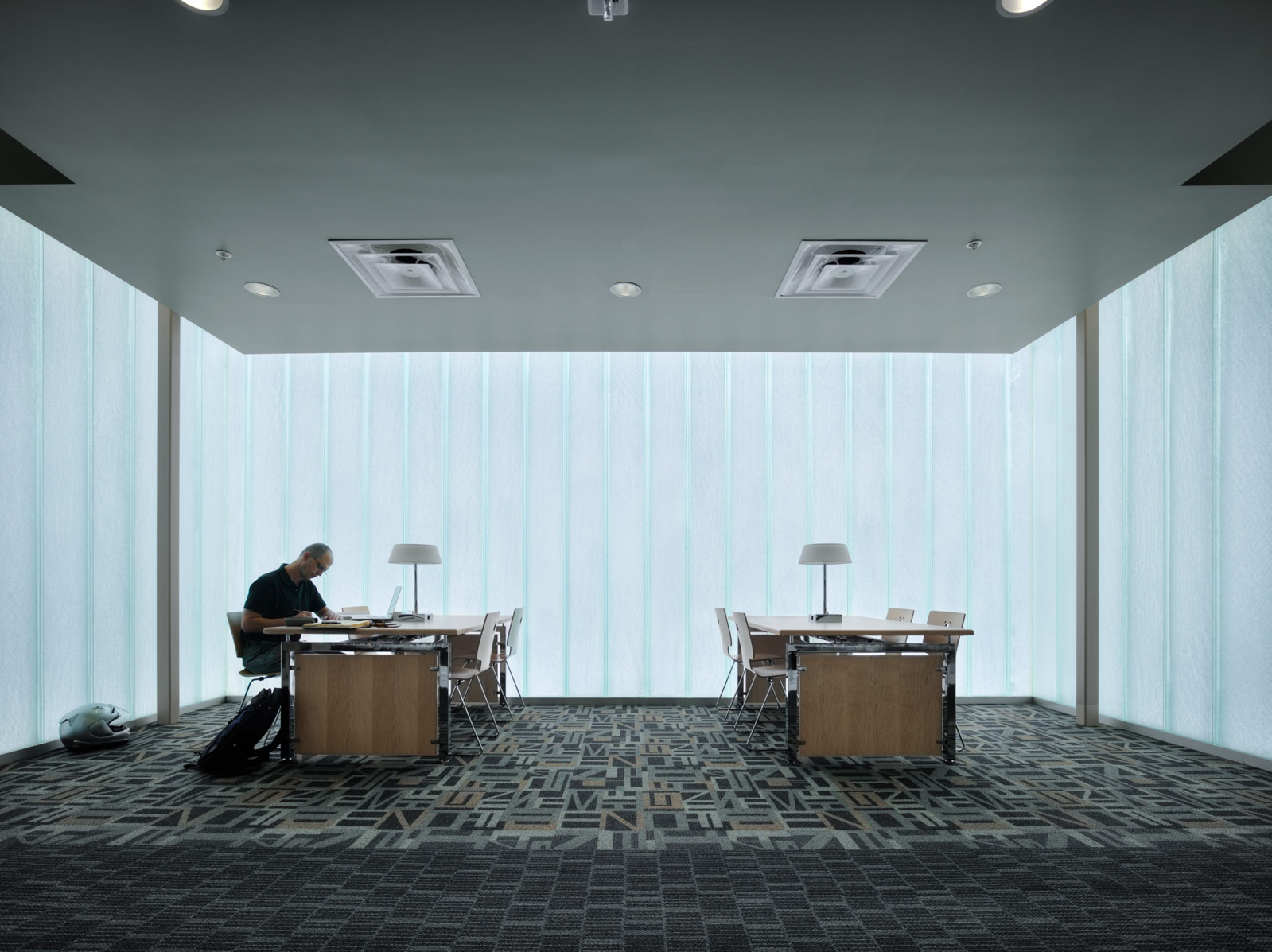Achieving Energy-efficient Buildings: Using thermally enhanced channel glass for energy savings
Key factors of thermal performance
Channel glass walls address three important factors of thermal performance by means of coatings and translucent thermal insulation materials. A glass assembly’s ability to transmit natural light while controlling energy transfer from within a building to the exterior is described by three variables:
- U-value;
- SHGC; and
- visible light transmission (Vt).
The architectural challenge is to present an esthetically pleasing exterior envelope and balance the three variables to produce an economically sustainable building.

The first area of energy consideration in configuring a glass wall is the aforementioned U-value—a measure of the non-solar heat transfer through a material or assembly. The lower the U-value, the lower the rate of heat loss (or gain) to the environment, due to non-solar drivers. When compared to opaque, heavily insulated areas of a building envelope, glass sections are relatively weak heat-transfer points. The design must provide a balance between the glass’ thermal performance and the amount of visible light admitted to the building. This balance is met by discretion between architectural intent and the goal to reduce electrical use between designers and owners.
Channel glass configurations use a low-e coating and/or translucent insulation materials to reduce the U-value through a double-glazed, full-height wall. The low-e coating creates an iridescent appearance when viewed from the building’s exterior. (This is characteristic of hard coat low-e coatings applied to cast glass.)
There are a few types of translucent thermal insulating materials suitable for a channel glass assembly. The material appears as a uniform white interlayer between the glass channels. Employing coatings and/or insulations enhances the thermal performance of double-glazed channel glass walls and, when used in combination, can progressively improve the U-value from 2.79 W/m2K (0.49 Btu/sf.F) for uncoated glass to a U-value of 2.73 W/m2K (0.41 Btu/sf.F) for low-e coated glass. The wall can be further improved to 0.91 W/m2K (0.19 Btu/sf.F) when a low-e coating and thermal insulation materials are combined. These options will provide a Vt ranging from 28 to 77 per cent.
In warm climates, similar consideration is given to the solar heat gain, measured as SHGC. This value is a measure of the percentage of incident solar radiation transmitted to the interior of a building—the lower the value, the better the wall’s shading properties. A double-glazed channel glass wall combining a solar reflective coating, recognized by its blue-gray aesthetic (commonly referred to as Azur) and a translucent insulation material can deliver a SHGC as low as 22 per cent.
The third variable has to do with admitting natural light, referred to as visible light transmittance. Generally, the lower the heat transfer, the lower the visible light admitted, as shown in Figure 1. The subsequent addition of coatings and insulation materials to a glass wall increases the opening’s opacity and obscuration, decreasing light’s ability to pass through.
Framing systems for channel glass walls
A major benefit of channel glass is the minimal amount of exposed framing required to configure a wall. The glass is captured at the channel’s top and bottom by aluminum extrusions. However, the area between the channel ends does not require vertical framing support. The channel glass U-shapes’ flanges provide it with significant structural properties, withstanding greater wind loads than similar sized flat glasses. When provided in a fully tempered form, the unsupported span under typical wind conditions can reach heights up to 7 m (23 ft). These structural properties also allow channel glass openings to be virtually unlimited in width.

The development of aluminum framing systems allows both vertical and horizontal applications, including unitized horizontal systems, under various structural framing configurations integrated into the surrounding construction. These framing systems are designed to deliver double-glazed exterior walls, single-glazed screen walls, and interior partitions. Many systems have successfully passed rigid curtain wall performance testing, surviving wind loads as high as 3590 Pa (75 psf) in independent laboratories.
These configurations have also successfully passed seismic performance tests required for Class III buildings, supporting horizontal displacements of 6.25 mm per 300 mm (1/4 in. per 12 in.) of storey height. Class III is defined in American Architectural Manufacturers Association (AAMA) 501.4, Recommended Static Test Method for Evaluating Curtain Wall and Storefront Systems Subjected to Seismic and Wind Induced Interstory Drifts. Their use is permitted in critical facilities (i.e. emergency response, healthcare buildings) and those essential structures needed to remain functioning beyond typical commercial buildings in the event of earthquakes.







